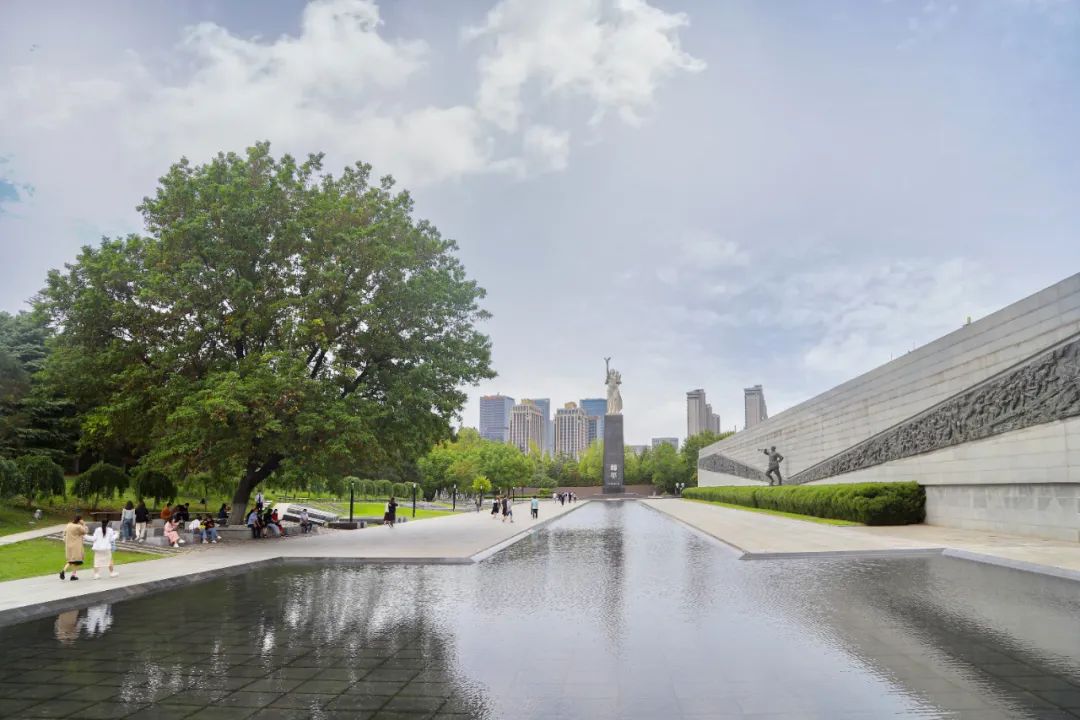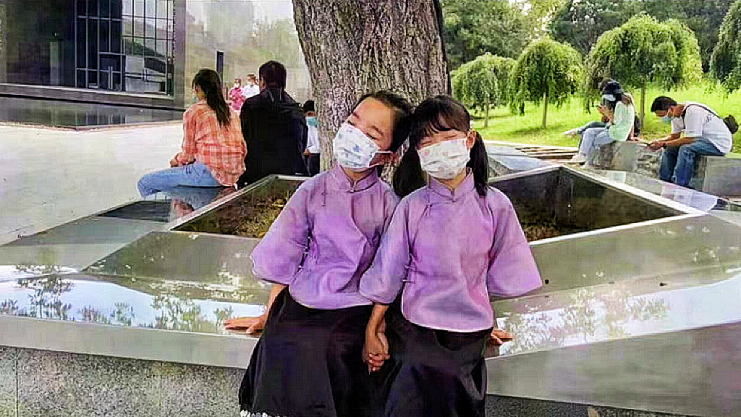Listen to This Singing Tree
In the Peace Park of the Memorial Hall, there is a Chinese beech tree. The large tree is lush and green, like a giant umbrella held open. Many visitors will come to rest under the tree after visiting the Exhibition of Historical Facts on the Nanjing Massacre.Recently, visitors were surprised to find that they could hear music sitting under the tree, from ChorusforNanjingRefugees(《南京难民合唱曲) to Mercy (《感同身受》), from the Trumpet of Victory(《胜利号角》) to the Light of Life (《生命之光》). Different music could be heard from four benches.This is an “unprecedented singing tree” and said to be the first of its kind in a Chinese museum.
Sitting on a bench with the words “Power of Life” written on the south side of the tree, facing the newly grown shoots of purple grass, visitorscan hear the song Chorus for Nanjing Refugees written in 1938 by an international friend McCallum,who stayed in Nanjing and was known by the refugees as the “Food Ambassador”in the Nanjing Safety Zone .
After the fall of Nanjing, food became scarce. In early 1938, international friends managed to collect broad beans from Shanghai to Nanjing and distributed them to refugees.McCallum wrote the song. It is also known to refugees as the Broad Bean Song (《蚕豆歌》). "We want beans for our breakfast. Beansfor our lunch. Beans at suppertime..." This song soothes the sadness,as the comfort and encouragement to the refugees, conveys the warmth of the world and the hope of life.
A bench on the east side of the big tree is inscribed with the words "Messageof Hope". It faces the Exhibition Hall and is intended to look back to the history and feel empathy.

Sitting here, the visitors will hear Megan Brady, the great-granddaughter of Richard Brady, the surgeon who stayed at the Drum Tower Hospital in Nanjing, singing a song at the 2019 “Candlelight Vigil—International Peace Gathering”:Mercy. Richard Brady returned to the DrumTower Hospital in February 1938, against all odds, to join Doctor Wilson, who remained in Nanjing to help the refugees.
When his great-granddaughter Megan Brady grown up, she was so moved by her great-grandfather's story that she wrote the song Mercy. Through this song, she hopes that young people around the world will "feel the same" about the history of the Nanjing Massacre.
On the north side of the singing tree, the words “Song of Victory” are inscribed on the seats. Sitting here, facing the Wall of Victory, you can listen to the Trumpet of Victory from the tree. Through its gradually surging and rousing melody, showing the Chinese people from their hard-fought battle to their final victory. Visitors can also listen to The Light of Lifeand feel the preciousness of peace.
The Light of Life, taken from the opera Diary of John Rabe, expresses gratitude to a group of Chinese and international friends who stayed in Nanjing, including John Rabe and Minnie Vautrin. They did everything they could to protect and help refugees, record and protest against Japanese atrocities. Their kind deeds shine with the light of humanity.

The secret to the singing treelies in its canopy. The Memorial Hall invited designers, sound technicians and musicians to participate in the process, working together to place a four directional ultrasonic sound conduction devices inside the canopy to create an immersive soundscape experience for visitors.
The seats in the installation are also specially designed. The seats rise from north to south, creating a monumental sense of architectural space. The four directions of the seats correspond to the four themes, and the four pieces of music selected correspond to the themes.

